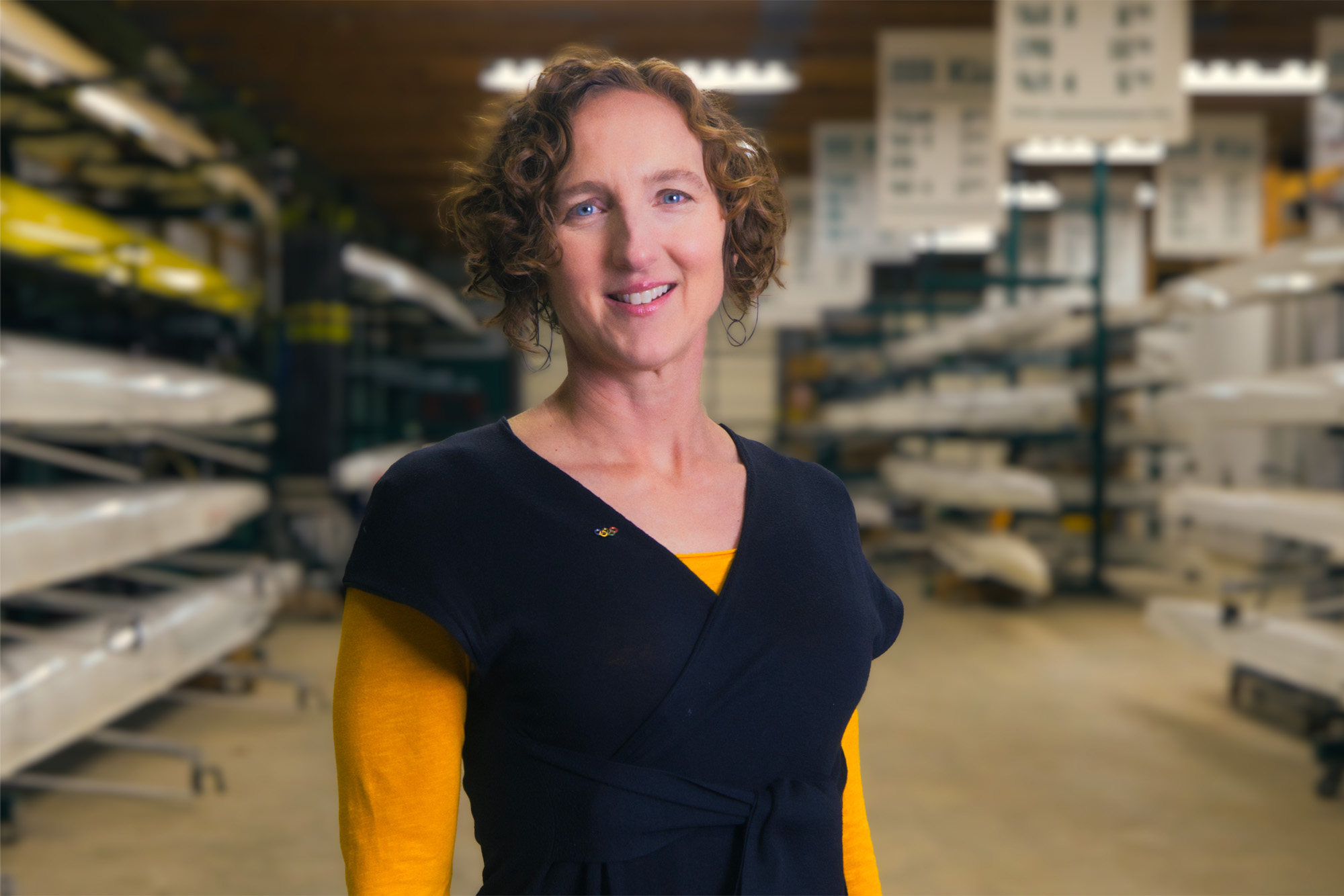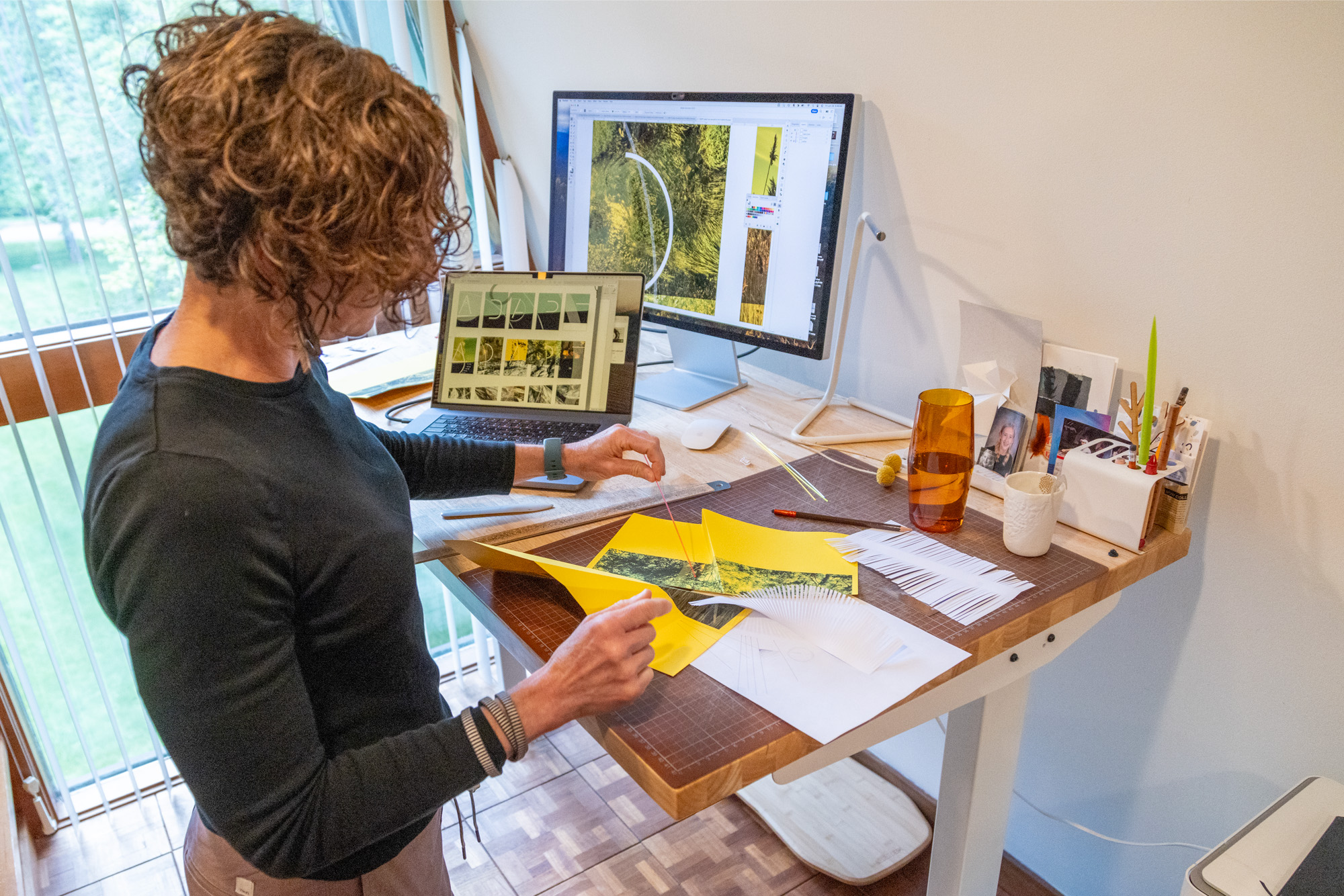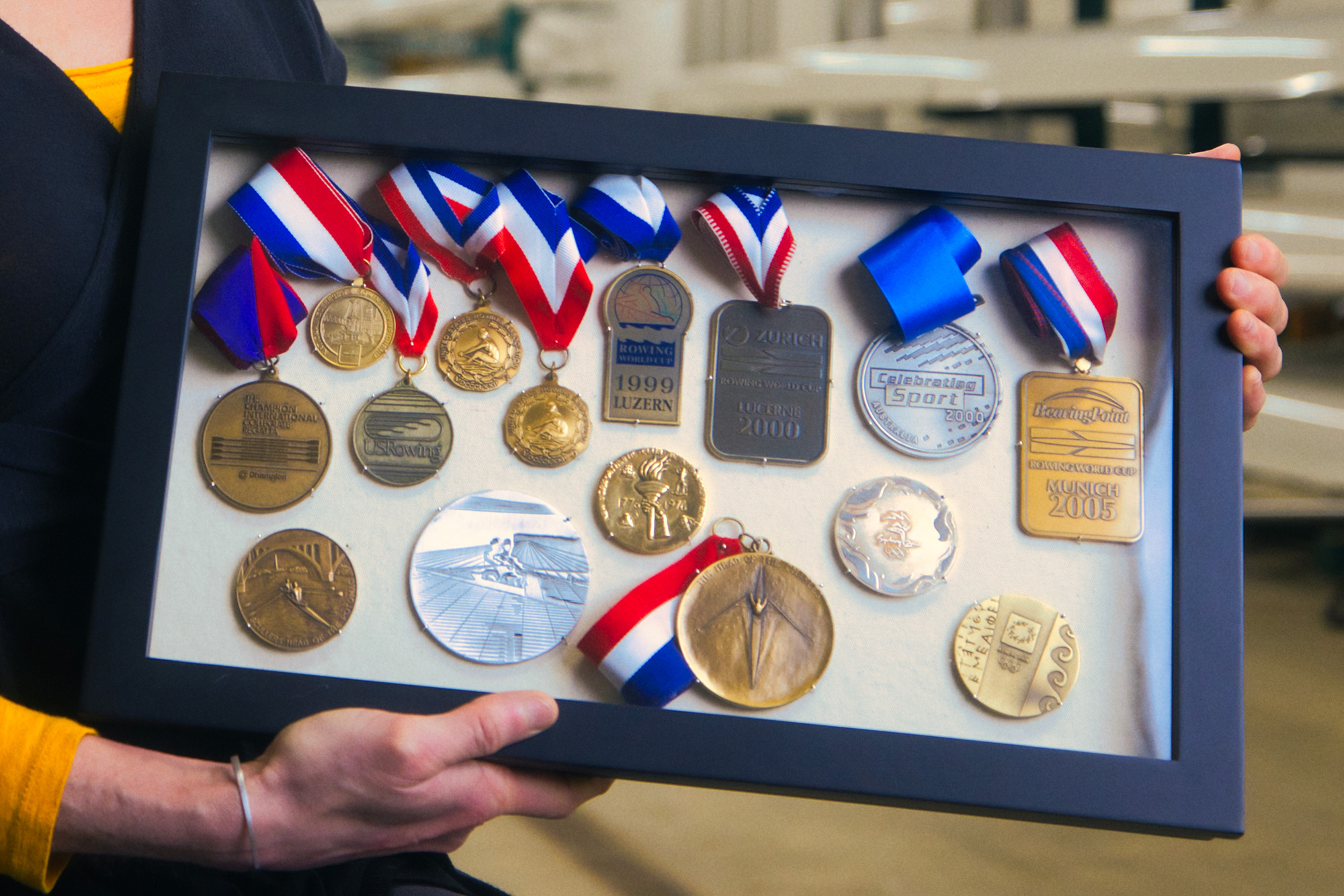The modern Olympics continue to highlight athletic excellence and a spirit of teamwork even after more than 125 years since their inception in Athens, Greece. Now, every two years, the Olympics — with either the Summer Games or Winter Games — connect people and cultures in peaceful competition. Roughly 10,500 athletes from around the world will compete at the 2024 Paris Games July 26 to Aug. 11.

Two-time Olympic rower Kelly Salchow MacArthur also sees a connection between athletics and art, especially in bringing people together. In addition to being a former Olympic athlete, Salchow MacArthur is a professor and practitioner of graphic design at Michigan State University.
Salchow MacArthur competed with the U.S. National Women’s Rowing Team at the Olympics in Sydney, Australia, in 2000 and in Athens, Greece, in 2004, placing fifth both times. Additionally, she is a two-time participant in the Olympian Artists program, launched in 2018 as a way for Olympians and Paralympians to share their experiences as athletes and artists on a global platform. Most recently through the program, Salchow MacArthur was an artist in residence working with Parisian children on a collage project showcasing Olympic values.
Here Salchow MacArthur shares how her connections with the Olympics and rowing have shaped her work as a designer and advocate for environmental awareness.
What was the experience of being an Olympic rower like?
Competing in rowing at the Olympics was an amazing life experience. It is something that I’ll always be proud of and something that I recognize as a big part of who I am today. Not because of just those weeks of competition, celebration and spectacle, but because of the 16 years of dedication, sacrifice, challenge and perseverance that got me to that point.

Even after three years on the U.S. National Team, I never really believed that I would be at the Olympics. I remember walking into the opening ceremonies for the Olympics in Sydney 2000 and thinking: ‘How did I get here? I’m Kelly from Ohio. How did this really happen?’ In that moment, wearing my USA uniform, walking with my teammates and seeing the stadium flickering with flashbulbs made it seem real, yet still unbelievable.
Being a part of the Olympics has allowed me to participate and contribute to the long continuum of the story of humanity, the global community of ethical competition in the love of sport and finding peace and common ground.
How were your Olympic experiences as an athlete different from your experiences as an artist?
When I was competing in the Olympics as an athlete, I was there at the peak of my athletic career. I was representing the United States as an athlete with a clear mission, and I had to really focus on my performance. It was a rare opportunity to test my ability on the most visible world stage for sport.
When I reconnected with the Olympics 20 years later as an artist through the Olympian Artists program, I was representing the global Olympic community. I was illustrating the Olympic values —including teamwork, resilience, persistence, honor, joy and respect — first through designing Japanese-style curtains, called noren, for display at Tokyo 2020 [held in 2021 due to the COVID-19 pandemic] and then through a community art and collage project with Parisian children. With my Paris artist in residence, I really was able to spend time with the people and contribute to the local community creatively in thoughtful one-on-one interactions.
The two kinds of Olympic experiences were different, but both very enriching and fulfilling, tapping into human capabilities and connection.
How did your experiences as a rower shape your work as a designer?
Rowing over the past 36 years on bodies of water around the world has forged my close connection to water and the natural world. This has led me to focus on environmental awareness and advocacy in my design work, and it continues to provide feedback and inspiration. I bring the tools of visual communication to that advocacy.

The arts can expand our understanding of the world around us in uncommon ways. We’re inundated with images and information constantly, but if something catches us in an unexpected way, it can grab our attention and have an impact. That’s what art and design have the power to do.
In terms of environmental action, design can serve as the connection between abstract information and clarity for the public. It can help distill messages, focus paths forward and provide individuals with plans of action toward systemic change.
In both rowing and design, I rely on my training while trusting my instincts. When I’m rowing on the water, my senses are hyperaware to respond with agility whether in an all-out race or a steady-state row. When designing in my studio, I’m balancing combinations of type and image. These two elements play off each other, visually and communicatively, creating ramifications throughout a piece — not unlike ripples on the surface of water. Both practices are responsive and unpredictable.
How are art and athletics connected?
Both art and athletics are clear demonstrations of human ability and expression. As with the Olympics, these demonstrations function across cultures. They bring us together.

As an athlete, I respect the trailblazers of my sport, my coaches, my teammates and competitors. Especially in retrospect, I feel a strong union with all other Olympians and Paralympians. As a designer, I am grateful for the guidance and lessons that I benefited from in my education and formative creative experiences. As an educator, I pass on these lessons, complemented by my own evolution and supported by the sense of comradery that sport has instilled in me.
When I am in the boat, there are no distractions as I listen, feel, balance and push. Similarly, I am in the flow when I’m fully engaged in the creative process — seeing things start to fit together as my mind moves quicker than my hands can keep up. The repetition of iteration and review is parallel to the rhythm of the stroke, making tiny corrections with each catch and finish. Both art and sport produce these Zen moments.
Being an athlete and being an artist each develop the mind, the body and the spirit, and they push us to keep exploring and challenging ourselves. They expand our abilities as we seek to reach our potential.
How have your experiences with the Olympics continued to impact you?
Each rendition of the Olympics brings unexpected adventure and experience and is always a way to connect different cultures in peaceful competition. The Olympic values are really a set of principles that can pull all of us together across cultures and generations.
Although I didn’t come home with an Olympic medal, my experiences are something I’ll always be proud of. I’m very grateful for what I’ve been lucky enough to encounter, and I look forward to what may come next. Being a part of the Olympian Artists program has been a way for me to share these values, lessons and adventures with others.
Victory and defeat are both a part of the continuum of life, teaching lessons to help us move forward and grow.